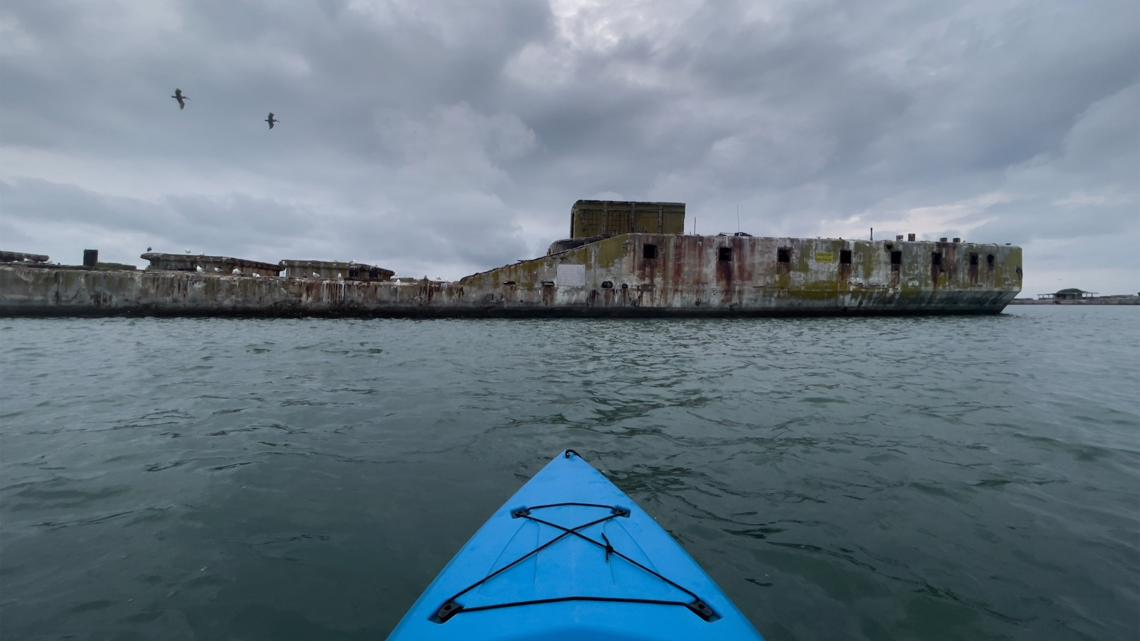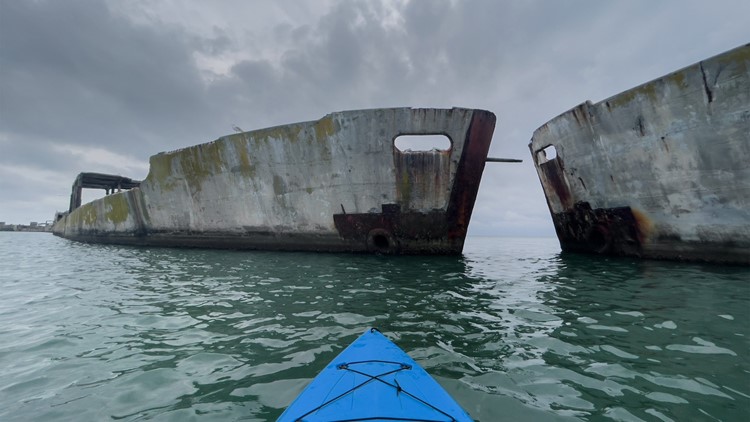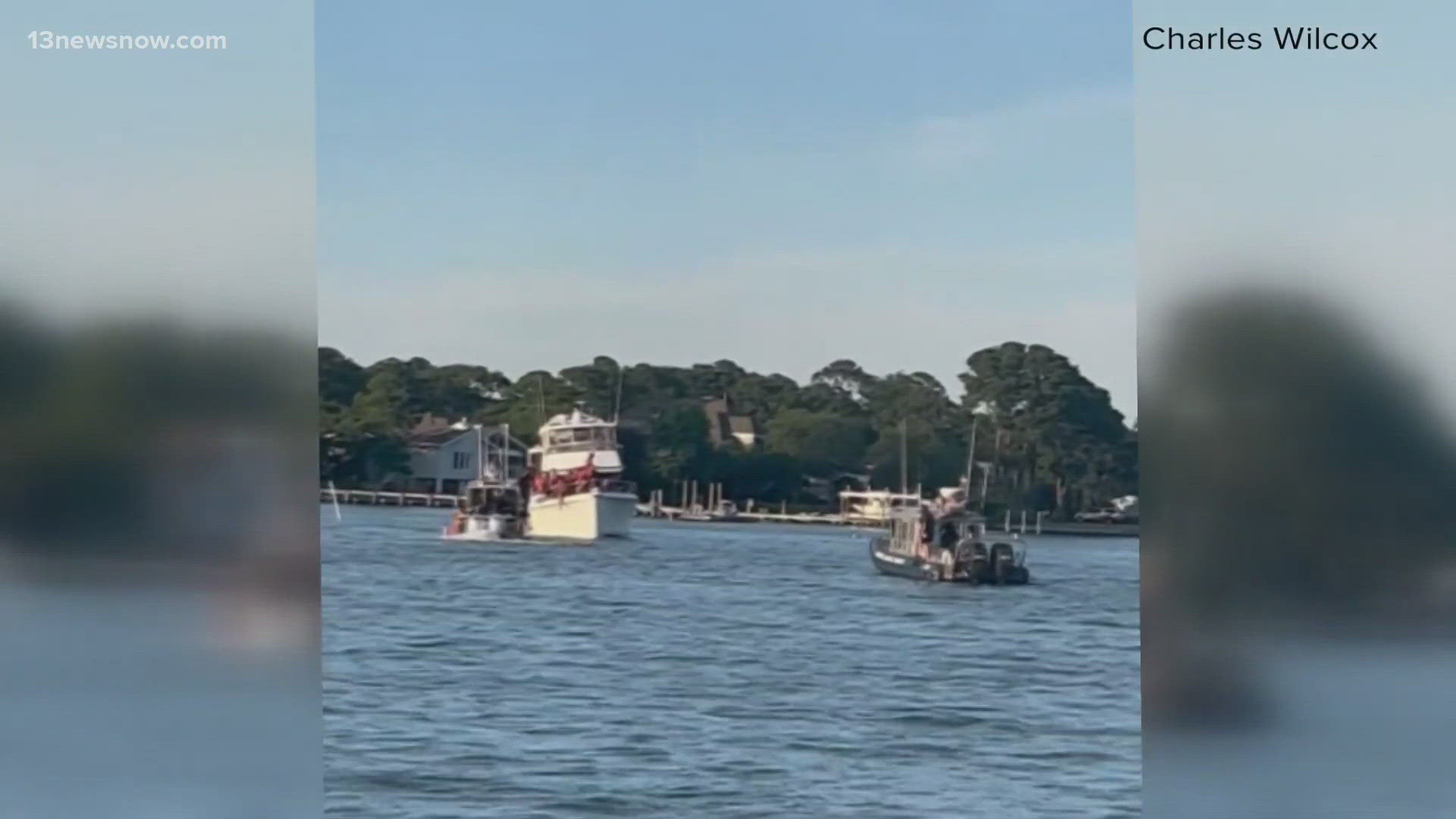KIPTOPEKE, Va. — If you're looking to go kayak someplace unique (and maybe a little spooky), check out Kiptopeke State Park on Virginia's Eastern Shore.
You'll get an awesome view of the Chesapeake Bay. But there's also something you don't see every day.
Just off the shore, a fleet of partially sunken ships serves as a breakwater for the beach. According to a Virginia State Parks (VSP) pamphlet, the fleet consists of nine concrete ships built for service during World War II and later sunk in 1948.
Exploring this fleet is the perfect way to get on the water while exploring some history. Here are some things to know before you go.
Where the ships came from
According to the VSP pamphlet, the former U.S. Maritime Commission contracted a Philadelphia construction company, Matthew H. McCloskey and Company, in 1942 to build a fleet of 24 merchant ships using concrete for hulls and decks.
They couldn't use steel because it was being used to build vehicles for the World War II effort.
This fleet became known as the McCloskey ships. They were launched throughout 1944 and served in both Atlantic and Pacific theatres.
Meanwhile, several years before the Chesapeake Bay Bridge-Tunnel opened, people would have to use a ferry service to go between the Eastern Shore and Hampton Roads.
In 1947, the Virginia Ferry Corporation opened its northern terminal three miles north of the Eastern Shore's southern tip. It needed protection from the tides and weather that affect the Chesapeake Bay, so in December 1948, nine of the McCloskey ships were brought to Kiptopeke Beach to serve as a breakwater. They were partially sunk and settled to the bottom.
Not only do these ships protect the beach, but the concrete material is also ideal for fostering sea and seabird life.


Where to launch your kayak
You can put your kayak in the water from the south beach or the park's designated kayak launch. To see a geo-referenced map, click here.
According to Virginia State Parks' website, a parking fee of $7 is required to get into Kiptopeke State Park.
If you don't own a kayak or other watercraft, solo kayaks, tandem kayaks, and paddleboards may be rented at Kiptopeke's camp store.
Some safety tips on the water
When you hit the water, it's going to be an awesome time. But staying safe while kayaking is super important, too.
The Virginia Water Trails website shared a list of tips for people taking their kayak or canoe out. Here are a few things to keep in mind:
Before you go, check a few things
You'll want to check the weather, tide charts, and water quality before you hit the water.
To play it safe, you don't want to paddle when the weather is bad. Knowing what's in the forecast is crucial. You can do that by downloading the 13News Now app.
The National Oceanic and Atmospheric Administration a list of tide predictions by location. You can search or scroll through a list of places, including Kiptopeke Beach.
The Virginia Department of Health will issue swimming alerts for certain places if the water quality is not up to state standards.
Have a whistle and wear a life jacket
According to the Virginia Department of Wildlife Resources (DWR), nearly all boating-related fatalities are the result of drowning and are preventable.
Virginia law requires a USCG-approved life jacket for each person on a kayak, as well as a sound-producing device, such as a whistle or air horn. The device has to be capable of a 4-second blast audible for half a mile.
More information about required equipment can be found on the Virginia DWR's website.



